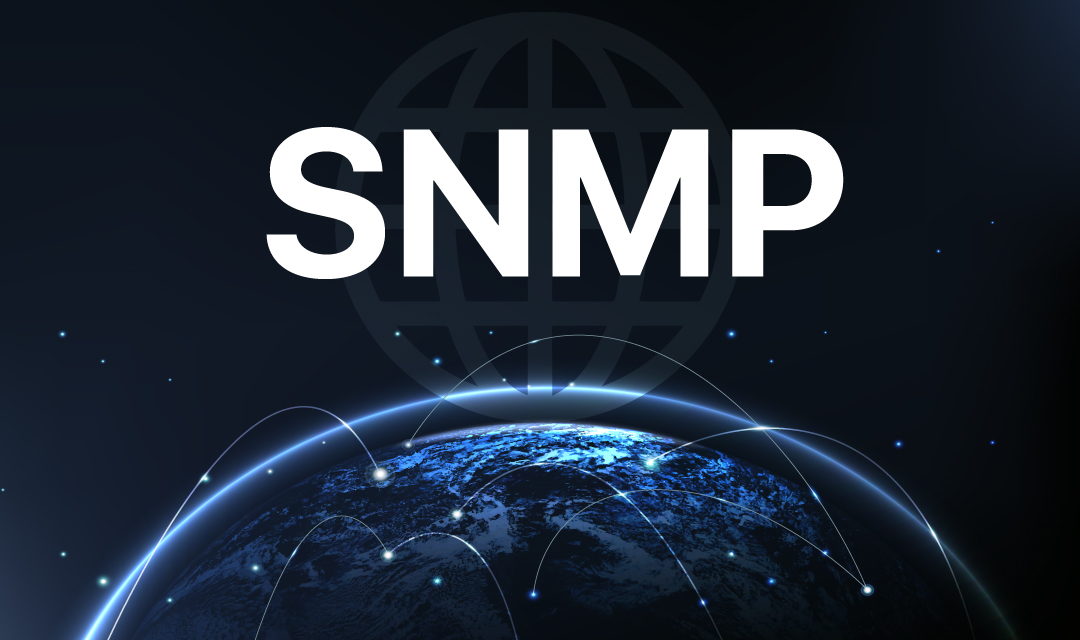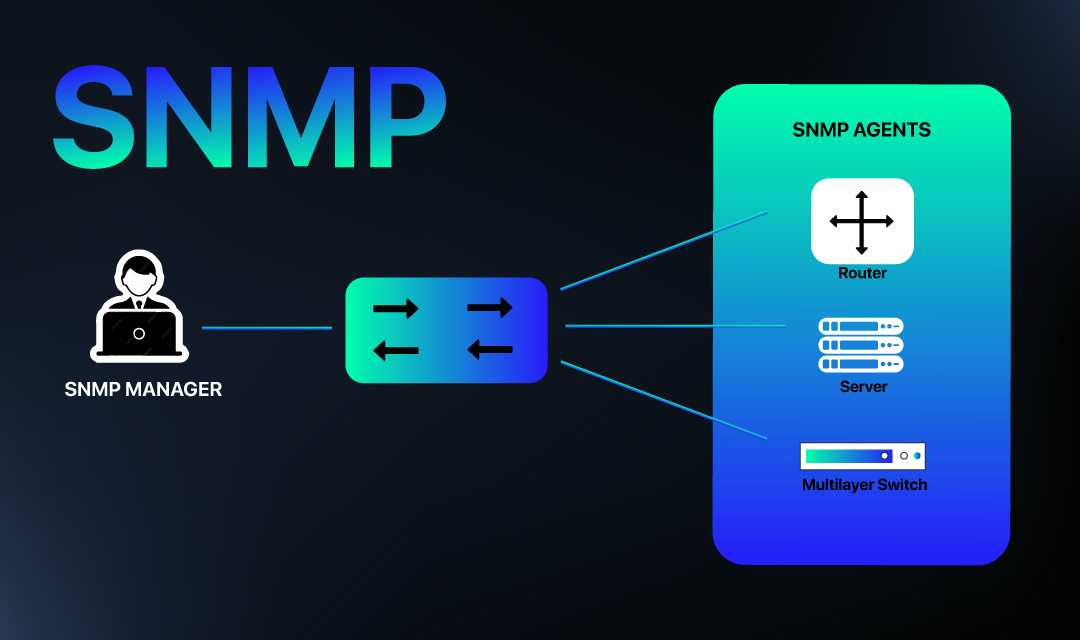
SNMP (Simple Network Management Protocol) is commonly used to manage a wide variety of network devices and systems. SNMP is a powerful and widely adopted standard for managing network-connected devices such as routers, switches, NAP, and NAS devices. It offers a straightforward approach to gathering information, configuring devices, and ensuring the optimal performance of network infrastructure. In this article, we'll discuss SNMP, understand its basic concepts, and exploring how it is used in network administration.
What is SNMP?
SNMP is a protocol used for managing and monitoring network devices including routers, switches, servers, printers, and more. It was developed as a means to simplify the process of monitoring and controlling network devices, offering a standardized way to communicate with and retrieve information from these devices.
What are the Key Components of SNMP?
SNMP is composed of several key components that work together to enable the monitoring and management of network devices. The primary components of SNMP include:
1. Managed Devices
Managed devices are the network devices such as routers, switches, and printers that you wish to manage and monitor. Managed devices contain an SNMP agent, which is responsible for collecting and storing data that can be accessed through SNMP. SNMP agents are software modules embedded in managed devices.
2. SNMP Manager
The SNMP manager, often referred to as the Network Management System (NMS), is responsible for making SNMP requests to the managed devices. It collects and analyzes data, sets configurations, and generates notifications based on the information received from the agents.
3. MIB (Management Information Base)
MIB is a hierarchical database that organizes information about network devices. It defines the structure and attributes of data that can be accessed through SNMP. MIB is a critical component for both managed devices and SNMP managers to understand each other's capabilities.
Understanding the interactions and relationships among these key components is essential for effective SNMP-based network management. SNMP provides a standardized and extensible framework for managing diverse network devices in a consistent manner.

What are the SNMP Ports used by the protocol?
SNMP uses the following commonly assigned ports for communication:
- Port 161 (UDP): SNMP agents (also known as SNMP servers) typically listen on this port for incoming SNMP requests. It's used for SNMP GET, GET-NEXT, and SET operations. SNMP managers (also known as NMS) send requests to Port 161 to collect data and manage network devices.
- Port 162 (UDP): This port is used for SNMP traps. SNMP agents send unsolicited SNMP trap messages to SNMP managers on Port 162 to notify them of specific events or conditions, such as errors, alarms, or other significant occurrences in the network.
SNMP primarily uses UDP (User Datagram Protocol) for its communication. UDP is a connectionless protocol, which means that SNMP messages are sent without establishing a persistent connection. While these are the default ports for SNMP, SNMP traffic can potentially be configured on different ports, especially in more complex network environments. However, Ports 161 and 162 are the standard ports for SNMP communication, and these defaults are widely recognized and used in most cases.
When configuring SNMP in a network, it's essential to ensure that the appropriate firewall rules and security measures are in place to allow SNMP traffic on Ports 161 and 162, especially when monitoring and managing network devices.
How does SNMP Work?
SNMP operates using a client-server model. Here's a simplified overview of how it works:
- The SNMP manager sends requests (such as GET or SET requests) to the SNMP agent on a managed device.
- The SNMP agent processes the request and retrieves or updates the requested information in its MIB.
- The SNMP agent sends the response back to the SNMP manager.
- The SNMP manager analyzes the data received and can take actions based on the information, such as generating alerts, modifying device settings, or displaying data for network administrators.
What are the common SNMP Operations?
SNMP supports several common operations that enable the management and monitoring of network devices. These operations allow SNMP managers to retrieve information from SNMP agents, configure settings, and receive notifications about specific events. Here are the common SNMP operations:
- GET: The SNMP manager requests specific information from a managed device, and the SNMP agent responds with the requested data.
- SET: The SNMP manager can modify the settings or configurations of a managed device by sending SET requests. This is used for tasks like changing network parameters or device configurations.
- TRAP: SNMP agents can send unsolicited TRAP messages to SNMP managers to alert them of specific events or conditions. This is often used for proactive monitoring and issue detection.
What are the Use Cases of SNMP?
SNMP has a wide range of applications in network management, including:
- Performance Monitoring: SNMP helps in monitoring network performance, such as bandwidth usage, CPU utilization, and memory usage, allowing administrators to identify and address performance bottlenecks.
- Fault Detection: SNMP can detect and report faults, errors, or unusual conditions in network devices, enabling rapid response to issues.
- Configuration Management: Network administrators can use SNMP to modify device configurations, ensuring that network devices are properly configured and optimized for performance.
- Security: SNMP supports various security mechanisms, including SNMPv3, to protect sensitive data and ensure secure communication between SNMP managers and agents.
- Inventory Management: SNMP is valuable for keeping track of network assets, including devices, firmware versions, and hardware details.
Conclusion
SNMP has become an essential tool as a Network Management System, offering a simple yet effective way to monitor and control network devices. Its flexibility and extensibility make it suitable for a wide range of network administration tasks. With SNMP, network administrators can maintain the reliability, security, and performance of their network infrastructure, ultimately ensuring a seamless and efficient digital ecosystem. Understanding SNMP's core concepts and its role in network management is a valuable skill for anyone involved in IT or network administration.
Share this post
Leave a comment
All comments are moderated. Spammy and bot submitted comments are deleted. Please submit the comments that are helpful to others, and we'll approve your comments. A comment that includes outbound link will only be approved if the content is relevant to the topic, and has some value to our readers.

Comments (0)
No comment